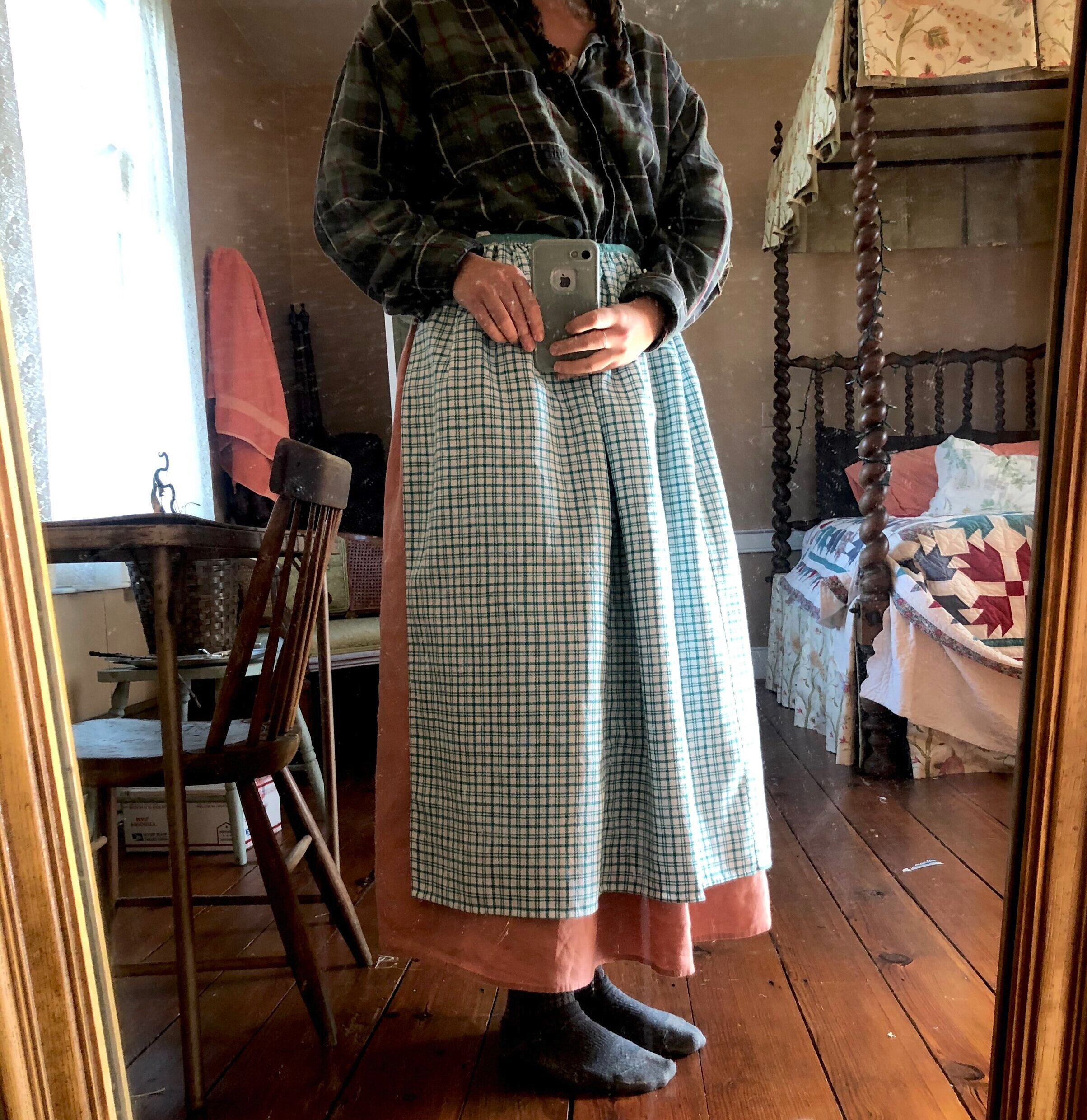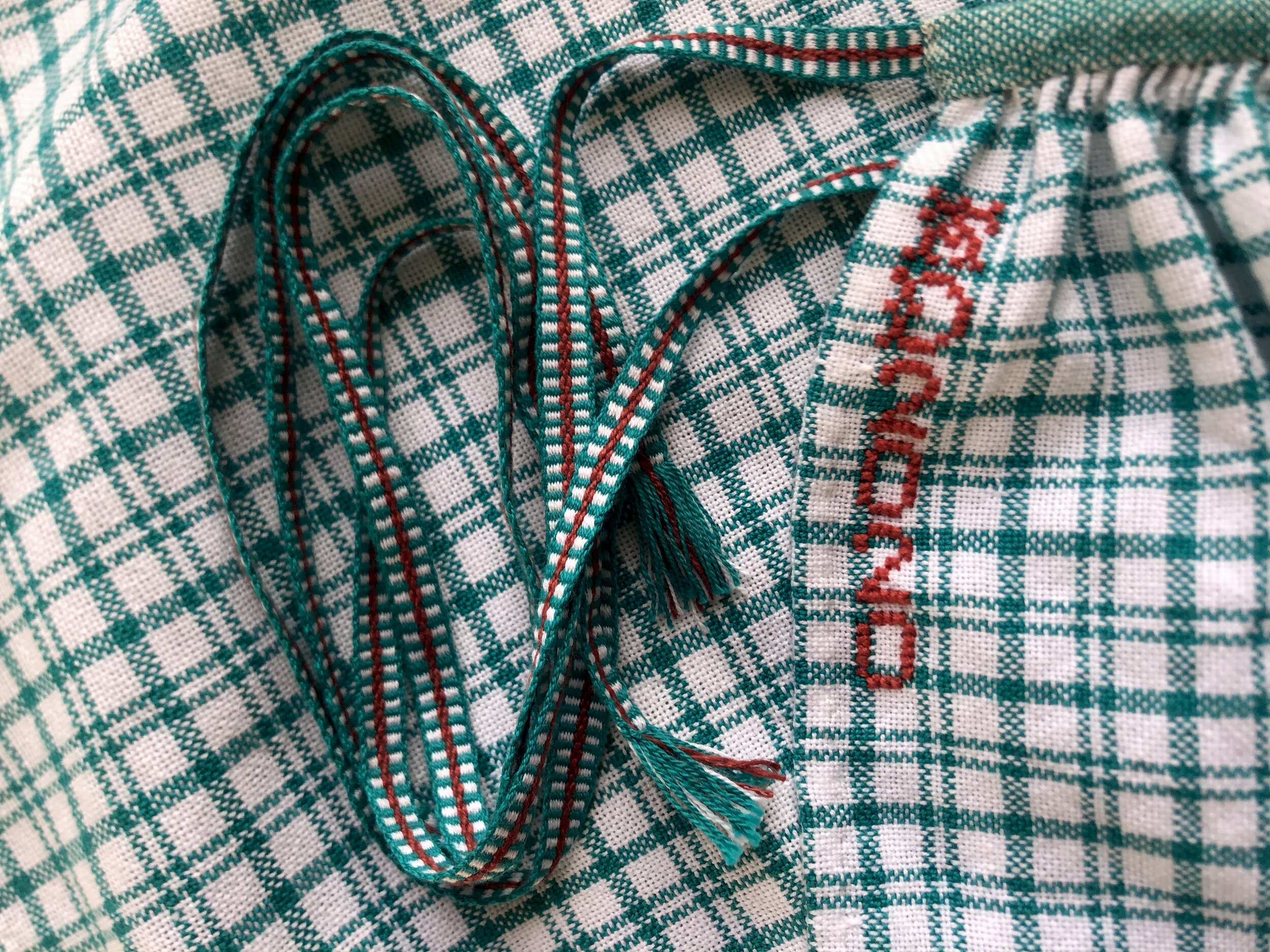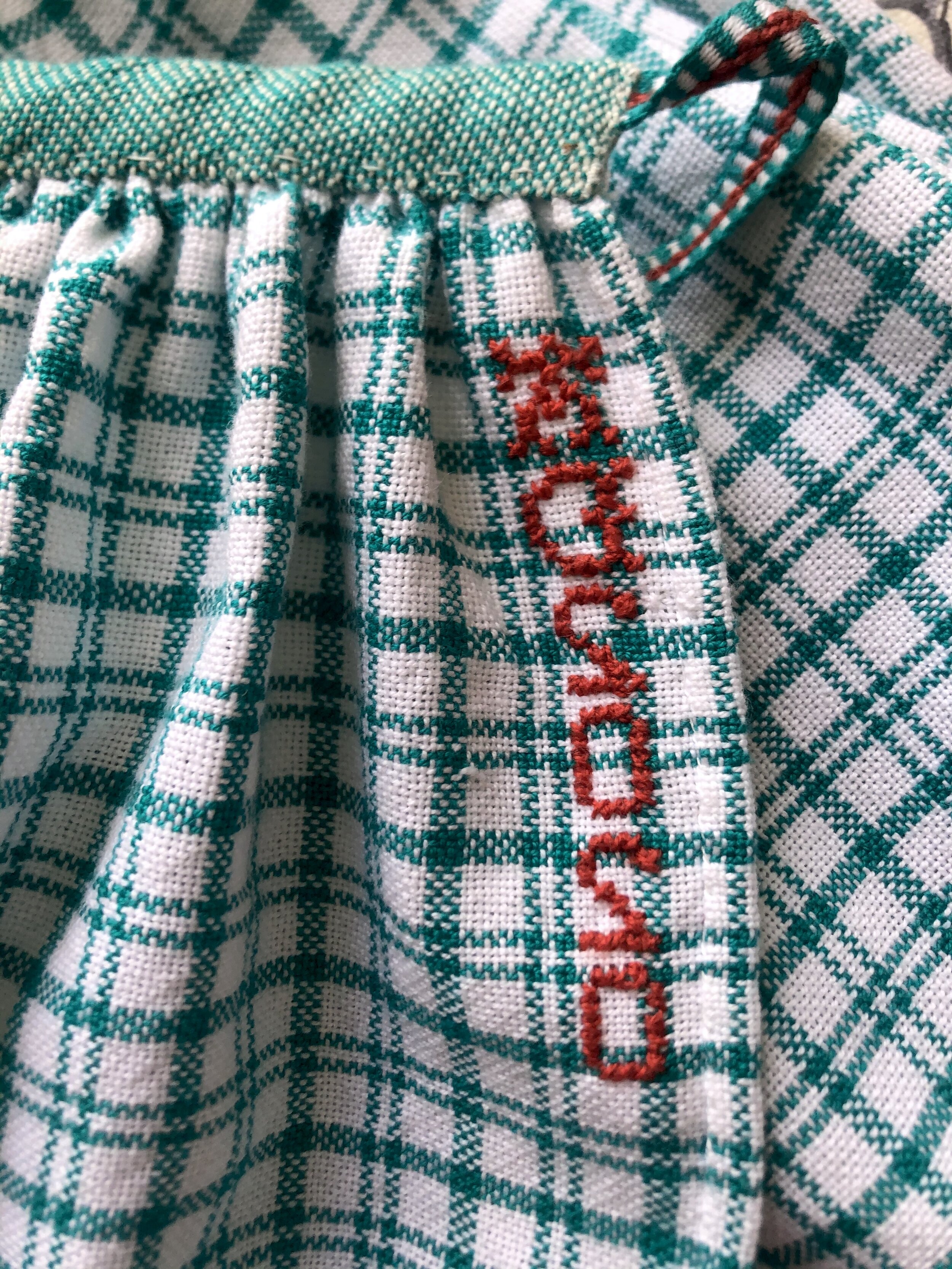I have sewn a few garments from my handwoven fabric before, but since delving into the world of historical costuming last winter I’ve been dreaming about sewing some practical clothes from my handwovens. I was inspired first by an instagram post from Elisabeth Hill (@plainweave) sampling 10/2 cotton at different setts to get an idea of the hand of the fabric each sett would produce.
check sett samples in 8, 10, & 12 ends/cm
I wove the above samples with unmercerized 10/2 cotton, resleying the same 8 end check to 8, 10, & 12 ends/cm. I found that the 10 ends/cm (which is about the same as 24 epi) was my favorite for clothing fabric. I knew also that I wanted to weave a blue & white check pattern for my apron fabric. This article from 18th Century Notebook provided a lot of contemporary images for checked aprons and was really helpful for deciding on the length I needed as well. I wound up perusing sample books in the online collections of Winterthur, where I found this sample book of fabrics from 1767 from Henry Remsen Jr. & Co., an importer of goods based in New York City in the 18th century. This book includes many fabric samplers including a ton of check variations. I decided on the following warp stripe pattern, which I wove in the same order with the weft colors in order to produce a check:
4 blue / 8 white / 2 blue / 2 white / 2 blue / 8 white, repeated 26 times in straight draw sett at 10 ends/cm
(So I know the teal-y blue I used isn’t exactly period appropriate but it was leftover from the check samples & what I had, so I used it.)
fabric on the loom
I wove this fabric with the intention of following the apron sew along from Burnley & Trowbridge for the construction of the piece, so I used the info they provided to settle on a width. The fabric was about 44cm wide in the reed, which was how it worked out with my weaving width & diving evenly (3 panels) into the average apron width of 114-127cm. I wove each panel to be about 1 yard long; giving myself room to sample I wound a 5.5 yd warp. Also I because I wove this on my counterbalance loom which I have not taken the time to get set up really properly, there are a couple of spots where the weft runs over some warp threads it isn’t meant to which you can see in the above pic.
My checks didn’t end up matching perfectly but that didn’t bother me & I wasn’t going to waste fabric trying to line everything up perfectly. I felled the 3 panels together and hemmed all around 3 edges, leaving the top edge raw. I took this piece of fabric with me to a month-long weaving mentorship program at the John C Campbell Folk School in Brasstown, NC. While I brought some commercially woven twill tape with me, I picked up inkle loom weaving and decided to weave some tape of my own to use for the apron strings.
tape bundle & apron fabric
I pulled the draft for the tape from Handwoven Tape: Understanding and Weaving Early American and Contemporary Tape by Susan Faulkner Weaver. The blue & white are the same threads I used for the rest of the fabric, and the red is a 2-ply hemp that I have used before for tapestry warp. This tape pattern is based on a tape sewn to grain bag from Pennsylvania. I modified the draft slightly to make it compatible with an inkle loom.
weaving fabric to cover binding
I also realized that I neglected to bring extra fabric for the binding, but luckily I had room at the end of a sample warp to weave up a small piece of plain weave for this. While I used the same blue weft from the apron, the warp was a mercerized natural 20/2 cotton.
I didn’t take any pics of the sewing process, but I did do it all by hand which I love & was very soothing. For the last step I had to monogram it in reversible cross stitch of course. And the goats have already tried to eat the ends of the apron ties.
project details:
straight draw, 4 harness
10 ends/cm, sleyed 2-3-2-3 in 4 dents/cm reed
42 cm wide
5.5 yd warp
check: (4 blue / 8 white / 2 blue / 2 white / 2 blue / 8 white) x 26, 4 blue






